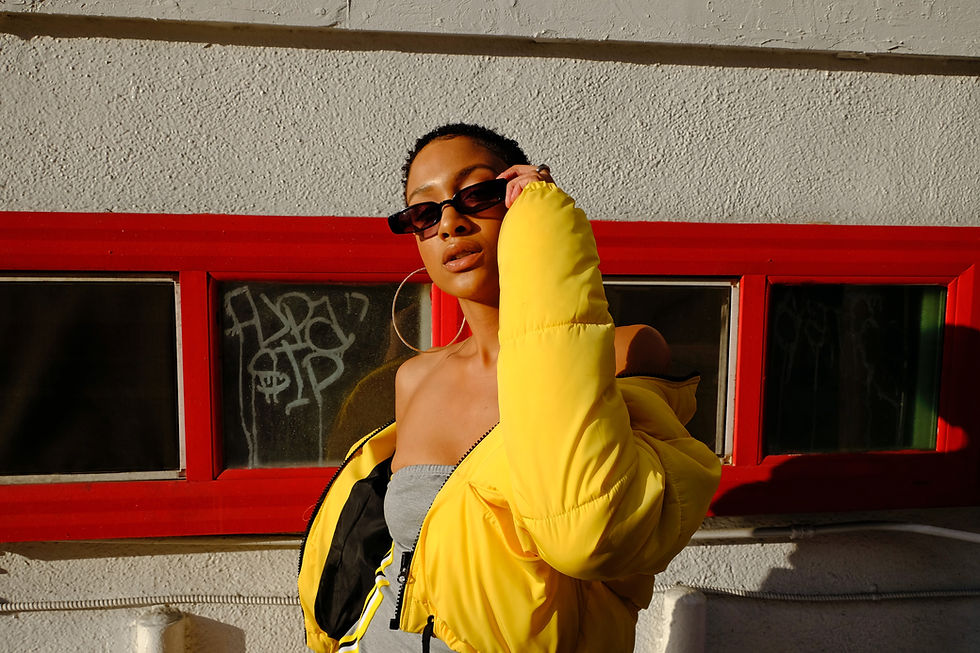How to Create a Standout Custom T-Shirt Design (Even If You’re Not a Designer)
- Preston

- Mar 18
- 3 min read

Custom T-shirts are a powerful form of self-expression, branding, and marketing. Whether you’re designing merch for a business, a personal project, or an event, the right approach ensures your shirt is both stylish and professional—even if you have zero design experience.
In this guide, we’ll walk you through simple, step-by-step tips to help you create a standout custom T-shirt design that people will love to wear.
Step 1: Define Your T-Shirt’s Purpose & Audience
Before diving into design, ask yourself:
✅ Who is the T-shirt for? (A business, event, personal use, sports team?)
✅ What message or theme should it convey? (Bold, fun, professional, casual?)
✅ What style fits the audience? (Minimalist, graphic-heavy, vintage?)
📌 Example: A corporate event T-shirt might use clean, branded colors, while a streetwear design could have bold typography and edgy graphics.
Step 2: Pick the Right Colors for Maximum Impact
🎨 Color is one of the most important aspects of T-shirt design. The right color combination can make your design pop, while the wrong one can make it hard to read.

Color Tips:
✔ Stick to 2-3 colors for a clean, professional look.
✔ Use high-contrast colors (e.g., black on white) for readability.
✔ Consider color psychology—blue = trust, red = energy, green = eco-friendly.
✔ Always check how colors look on different T-shirt backgrounds.
📌 Pro Tip: Use free color palette generators like Coolors to find complementary color schemes.
Step 3: Choose Fonts That Are Bold & Readable
🔤 Fonts set the tone of your T-shirt design—casual, formal, playful, or edgy.

Font Selection Tips:
✔ Stick to one or two fonts max to keep things balanced.
✔ Use bold, easy-to-read fonts for clear messaging.
✔ Avoid overly decorative or script fonts unless they fit the theme.
✔ Try Google Fonts or Canva’s font library for free typography choices.
📌 Example: A retro design might use a bold, blocky font, while a fitness brand would opt for sleek, modern typography.
Step 4: Keep Your Custom T-Shirt Design Simple & Balanced
One of the biggest mistakes beginners make is overcomplicating the design. The best T-shirts are clean, balanced, and visually appealing.
Layout Tips:
✔ Keep the main focal point in the center or upper chest.
✔ Use negative space (blank areas) to prevent clutter.
✔ Make sure text and graphics aren’t too small—they should be visible from a few feet away.
✔ Use grid tools in design platforms like Canva or Adobe Express to align elements properly.

📌 Pro Tip: Test your design by shrinking it down on-screen—if it’s still readable, it will work well on a T-shirt!
Step 5: Use High-Quality Images & Graphics
Blurry or pixelated graphics will ruin your T-shirt’s look. Always use high-resolution images and scalable graphics.
Graphic Quality Tips:
✔ Use 300 DPI (dots per inch) images for crisp printing.
✔ For logos or illustrations, use vector graphics (SVG, AI, EPS) so they scale without losing quality.
✔ Avoid low-quality screenshots or compressed images.
Best Free Design Resources:
🎨 Canva – Free T-shirt templates
🎨 Freepik – Vector illustrations
🎨 Unsplash – High-res photos for inspiration

Step 6: Create a Digital Mockup Before Printing
Before you print, preview your design on a T-shirt mockup to ensure it looks good in real life.
Where to Create T-Shirt Mockups:
✔ Placeit – Free & paid T-shirt mockup generator
✔ Canva – Upload your design and place it on a T-shirt template
✔ Printful Mockup Generator – Realistic apparel previews
📌 Pro Tip: Show your mockup to a friend or audience for feedback before finalizing.
Step 7: Choose the Best Printing Method
Different printing techniques affect cost, durability, and appearance. Here’s a breakdown:
Printing Method | Best For | Pros | Cons |
Screen Printing | Bulk orders | Durable, vibrant colors | Expensive for small orders |
DTG (Direct-to-Garment) | Small batches | Great for detailed designs | Not as vibrant on dark fabrics |
Sublimation | Polyester fabrics | Seam-to-seam printing | Limited to light-colored garments |
Heat Transfer Vinyl (HTV) | One-off designs | Crisp, bold graphics | Less breathable on fabric |
📌 Pro Tip: If you’re selling custom T-shirts, print-on-demand (POD) services like MadeFits, Printful, or Teespring can handle fulfillment for you.
Final Thoughts: Design a T-Shirt That Stands Out!
You don’t need to be a professional designer to create an amazing custom T-shirt—just follow these simple steps:
✅ Define your purpose & audience
✅ Pick the right colors & fonts
✅ Keep the design simple & balanced
✅ Use high-quality images & mockups
✅ Choose the best printing method

🔥 Ready to create your perfect custom T-shirt? Start designing with MadeFits today and bring your vision to life!
💡 Next Steps:👉 Need design inspiration? Check out our post on The Hottest Custom Apparel Trends for 2025!


